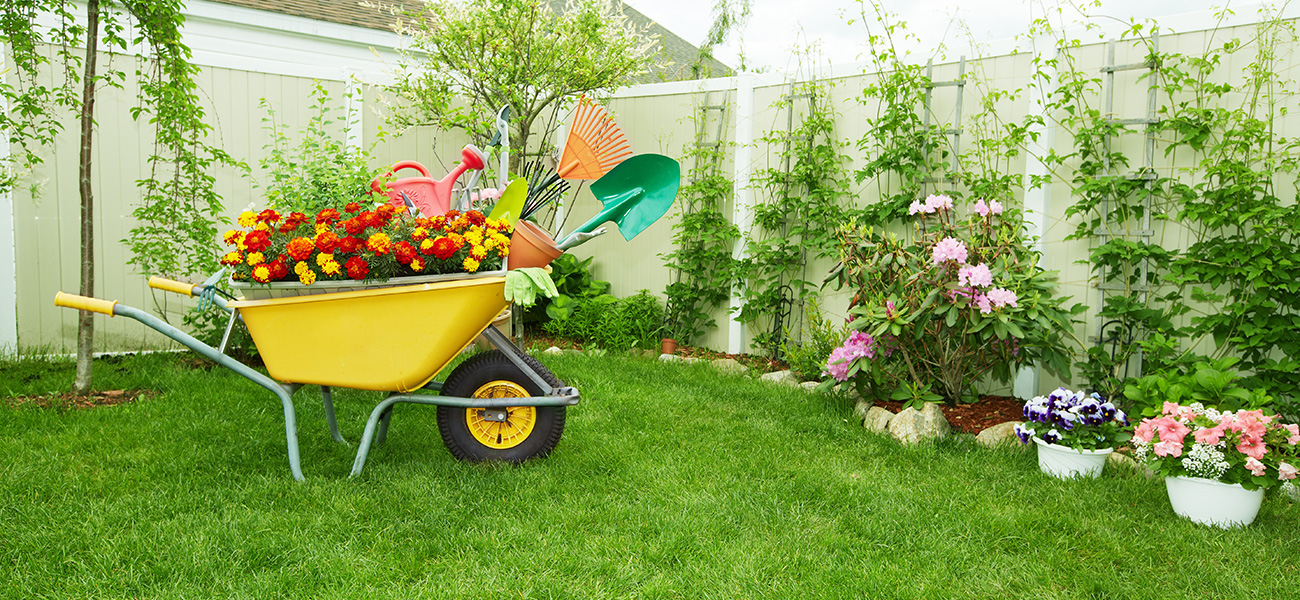Shielding Your Garden from the Ravages of Severe Weather
Posted on 30/05/2025
Shielding Your Garden from the Ravages of Severe Weather
Is your garden ready to withstand the next bout of severe weather? Nature's fury--be it torrential rain, howling winds, or scorching heat--can wreak havoc on even the most meticulously tended gardens. With climate unpredictability on the rise, it's vital to adopt robust strategies for shielding your garden from severe weather. This comprehensive guide explores how to protect your plants and outdoor space, ensuring your green oasis thrives regardless of what the forecast brings.

Why Protecting Your Garden from Harsh Weather Matters
In recent years, gardeners across the world have experienced increasingly erratic weather patterns. From unseasonal frosts and relentless droughts to sudden hailstorms and gales, severe weather can leave plants, soil, and structures vulnerable. Failing to take preventative measures could result in plant loss, soil erosion, structural damage, and diminished crop yields.
- Plant Health: Severe conditions can stunt growth, lead to disease, or kill plants outright.
- Soil Integrity: Erosion and nutrient depletion accelerate after heavy storms.
- Garden Features: Fences, sheds, and decor can be uprooted or destroyed.
By safeguarding your garden from harsh weather, you don't just protect your investment--you foster resilience and sustainability for years to come.
Understanding the Types of Severe Weather That Threaten Gardens
Different regions face unique weather challenges. To select the right protection strategy for your garden, it's crucial to identify which extreme conditions you're most likely to encounter:
- High winds and storms
- Flooding and heavy rainfall
- Hail events
- Extreme heat, drought, and sun exposure
- Frost and freeze
Each of these hazards demands specific mitigation techniques. Let's dive into tailor-made solutions for protecting your outdoor haven from unpredictable weather.
How to Shield Your Garden from Strong Winds
1. Install Windbreaks and Barriers
Wind damage can snap plant stems, uproot young trees, and dry out soil rapidly. To minimize these effects, windbreaks--both natural and artificial--are essential. Here's how:
- Hedge rows: Dense shrubs like privet, boxwood, or laurel filter and slow wind gusts.
- Fences: Semi-permeable fences (like slatted wood or mesh) disperse wind more effectively than solid panels, which can actually create turbulence.
- Temporary wind barriers: Use hessian, burlap, or even reed screens during stormy seasons.
Tip: Place windbreaks at a sufficient distance to allow air to move gently, not abruptly, around your most vulnerable plants.
2. Choose Sturdy Supports for Plants
Tender and tall plants--think tomatoes, sunflowers, or young saplings--often require staking. Proper support, using bamboo canes, garden stakes, or cages, prevents breakage and uprooting during gales.
3. Secure Garden Structures
Before wind storms arrive, check and reinforce sheds, greenhouses, and fencing. Secure loose panels and add anchors or guy wires to garden features at risk of being toppled.
Protecting Your Garden During Heavy Rain and Flooding
Downpours can erode soil, drown roots, and wash away seedlings. Flood-resilient garden design is the key to coping with heavy rainfall.
1. Improve Drainage Systems
- Raised beds: Elevating plants helps excess water drain away and keeps roots aerated.
- Slope contours: Gently sloping your garden channels rainwater away from beds and foundations.
- Install French drains or soakaways to facilitate rapid water dispersal.
2. Mulch for Moisture Management
A generous layer of mulch--like wood chips or compost--can act as a protective barrier, minimizing soil compaction, moderating moisture levels, and preventing erosion.
3. Choose Flood-Tolerant Plants
Certain species, such as iris, sedge, and marsh marigold, are naturally adapted to wet conditions. Integrate these into low-lying areas for a more weather-resilient garden plan.
Shielding Your Garden from Hail and Physical Impact
Hail can shred leaves, bruise fruit, and flatten seedlings in minutes. Proactive shielding makes all the difference.
1. Use Protective Coverings
- Row covers: Lightweight fleece or floating row covers shield delicate plants without impeding airflow or sunlight.
- Hail netting: Strong mesh netting can be draped over frames to absorb impact from falling ice.
2. Prioritize Damage Assessment and Recovery
After a hailstorm, prune damaged foliage, remove broken stems, and provide fertilizer to help plants recover.
Guarding Your Garden against Extreme Heat and Sun
With global temperatures climbing, heatwaves and drought have become a major threat to home gardens. Here's how to protect against the sun's harshest rays:
1. Install Shade Solutions
- Shade cloth: Drape over hoops or frames to reduce light intensity and lower leaf temperatures.
- Strategic planting: Place shade-loving plants beneath taller crops or near garden walls to provide natural sun protection.
2. Practice Water-Wise Gardening
- Early morning or late evening watering reduces evaporation.
- Mulching--as mentioned--locks in soil moisture.
- Self-watering systems, such as drip irrigation, deliver water directly to the root zone efficiently.
3. Choose Heat and Drought-Resistant Species
Prioritize hardy plants such as lavender, succulents, yarrow, and ornamental grasses. These varieties require less water and thrive in intense sun.
Protecting Your Garden from Frost and Freeze
Late spring and early autumn frosts can devastate plants not yet acclimated to cold. Preparing in advance is vital to shield your garden from icy blasts.
1. Utilize Frost Covers and Cloches
- Horticultural fleece can be laid over crops or wrapped around shrubs for instant insulation.
- Plastic cloches or DIY covers preserve heat around delicate seedlings or vegetables.
2. Water Plants Before Frost
Damp soil retains heat better than dry. Water beds thoroughly before cold nights to buffer plants against freezing air.
3. Harness the Power of Microclimates
Wall gardens, raised beds next to house foundations, and southern-facing slopes all warm up faster and retain more heat than open ground. Use these spots for your most frost-sensitive specimens.
Featured Techniques to Shield Your Garden from Extreme Weather
Looking for innovative and effective solutions? Consider the following advanced tactics for maximum garden protection from adverse weather:
- Greenhouse Gardening: Protects against every aspect of weather, from wind and rain to frost and hail.
- Polytunnels offer affordable, scalable weather shielding for vegetables and ornamentals alike.
- Living Roofs & Vertical Gardens: Absorb rainfall, reduce wind speeds, and provide thermal insulation.
Garden Design Principles for Weather Resilience
1. Diverse Planting for Stability
Diversity is your first line of defense when protecting your garden from harsh weather. By incorporating a mixture of annuals, perennials, shrubs, groundcovers, and trees, you create buffer zones and varied levels of protection. Dense planting patterns slow the wind, prevent waterlogging, and cushion the impact of hail or heavy rain.
2. Layered Landscaping
Adopt a tiered approach: tall trees and shrubs form an outer protective ring, mid-sized plants create a second barrier, and ground-covers hold the soil in place. This technique mimics natural forests and offers robust ecosystem protection.
3. Smart Pathways and Edging
Well-designed paths channel excess water away, while sturdy edges prevent soil erosion during storms.
Emergency Preparedness Tips for Gardeners
- Monitor the Forecast: Install a weather app or local alert system.
- Temporarily relocate container plants to sheltered spots in advance of storms.
- Prepare an emergency kit with frost cloths, netting, stakes, and covers for rapid deployment.
- Check drainage and gutters before and after storms.
Tip: Keep detailed notes of what worked (and what didn't) for your garden each season. Over time, you'll develop a tailored plan for defending your outdoor paradise against severe weather's wrath.

The Role of Technology in Weatherproofing Your Garden
Modern technology offers a suite of tools for shielding your garden from the ravages of severe weather:
- Automated irrigation: Delivers precise water levels based on soil moisture and weather conditions.
- Weather station sensors: Provide hyper-local data to inform timely protective actions.
- Remote monitoring cameras: Allow you to assess storm damage or flooding in real time.
Final Thoughts: Make Your Garden Storm-Ready Year-Round
Adopting a layered approach combining physical barriers, thoughtful plant selection, smart gardening techniques, and technology ensures your outdoor space is ready for anything. As climate patterns shift and intensify, being proactive about shielding your garden from severe weather is an investment in both peace of mind and the longevity of your plants.
Summary Checklist: Shielding Your Garden from Severe Weather
- Install windbreaks and barriers to break up strong gusts.
- Use raised beds and improve drainage to prevent flooding and root rot.
- Deploy protective covers and netting against hail and intense sun.
- Mulch generously to stabilize soil moisture and prevent erosion.
- Choose resilient plant varieties suited to your local climate extremes.
- Plan for emergency action--move plants, cover beds, and reinforce structures as needed.
With the right knowledge and preparation, every gardener can enjoy a lush, beautiful garden that weathers any storm. Don't let unpredictable weather catch you off guard--start implementing these tips today!



